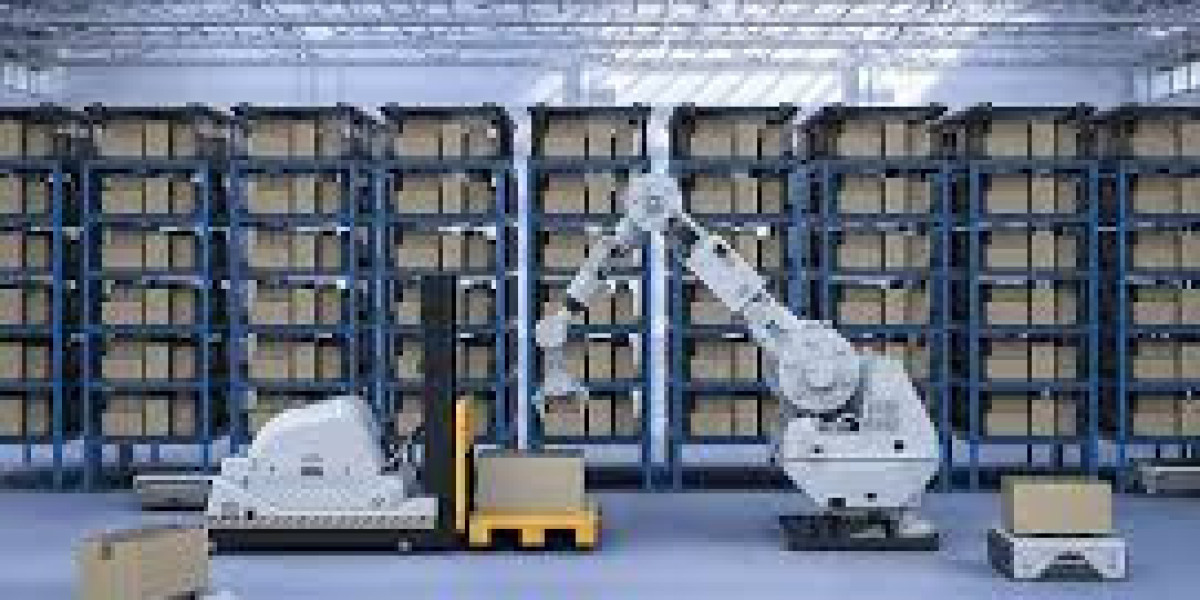The logistics and supply chain industry is undergoing a profound transformation, primarily driven by innovations in warehouse automation. As businesses strive for greater efficiency, accuracy, and scalability, automation technologies are playing a pivotal role in redefining warehouse operations. This article delves into the key innovations shaping the warehouse automation market, their benefits, and the future landscape of logistics.
Understanding Warehouse Automation
Warehouse automation refers to the use of technology to streamline and enhance warehouse processes. This can include a variety of technologies such as automated storage and retrieval systems (AS/RS), robotics, conveyor systems, and artificial intelligence (AI). The primary goal is to reduce human intervention in repetitive tasks, minimize errors, and improve overall productivity.
Key Innovations in Warehouse Automation
Robotics and Autonomous Vehicles One of the most significant advancements in warehouse automation is the integration of robotics and autonomous mobile robots (AMRs). These robots can navigate through warehouses, transporting goods between locations without human intervention. Companies like Amazon and Alibaba are leading the charge, deploying fleets of robots that operate alongside human workers. This not only increases efficiency but also allows for 24/7 operations, significantly boosting throughput.
Artificial Intelligence and Machine Learning AI and machine learning are revolutionizing warehouse operations by enabling predictive analytics and smart decision-making. These technologies analyze vast amounts of data to forecast demand, optimize inventory levels, and improve order fulfillment strategies. For instance, AI algorithms can determine the most efficient picking routes, reducing travel time and enhancing overall productivity.
Automated Storage and Retrieval Systems (AS/RS) AS/RS technology involves the use of automated systems to store and retrieve goods efficiently. These systems can maximize vertical space and reduce the footprint of warehouses, allowing for higher storage densities. Innovations in AS/RS include shuttles, mini-load systems, and high-density storage solutions, which can significantly reduce labor costs and improve inventory accuracy.
Internet of Things (IoT) The IoT connects devices and systems within the warehouse, enabling real-time monitoring and management. Sensors can track inventory levels, equipment status, and environmental conditions, providing valuable data to optimize operations. For example, IoT-enabled devices can alert managers when stock is running low or when equipment requires maintenance, minimizing downtime and ensuring smoother operations.
Warehouse Management Systems (WMS) Modern WMS solutions have evolved to include advanced features such as cloud computing, mobile access, and integration with other software systems. These innovations allow for better tracking of inventory, streamlined order processing, and enhanced visibility across the supply chain. A robust WMS can significantly reduce the time taken for order fulfillment and improve accuracy, leading to higher customer satisfaction.
Collaborative Robotics Also known as cobots, collaborative robots are designed to work alongside human employees. They can assist with tasks like picking, packing, and sorting, enhancing human capabilities rather than replacing them. This innovation allows warehouses to leverage the strengths of both humans and robots, leading to improved efficiency and safety.
Benefits of Warehouse Automation Innovations
The innovations in warehouse automation bring numerous benefits, including:
Increased Efficiency: Automated systems can operate continuously, performing repetitive tasks faster than human workers. This results in quicker order fulfillment and reduced lead times.
Cost Reduction: By minimizing labor costs and reducing errors, automation can lead to significant savings. While the initial investment in technology may be high, the long-term savings often outweigh these costs.
Enhanced Accuracy: Automated systems are less prone to human error, leading to improved accuracy in inventory management and order processing. This is crucial for maintaining customer trust and satisfaction.
Scalability: Automation allows businesses to scale their operations quickly in response to changing market demands. With the ability to add more robots or systems as needed, companies can adapt to fluctuations in order volume.
Improved Safety: Automating hazardous tasks can reduce workplace injuries. Robots can handle heavy lifting and repetitive movements, allowing human workers to focus on more complex and less risky activities.
The Future of Warehouse Automation
As technology continues to evolve, the warehouse automation market is poised for further innovations. Advancements in artificial intelligence, machine learning, and robotics will likely lead to even smarter and more efficient warehouse operations. Additionally, the rise of e-commerce and the demand for faster delivery times will push companies to adopt these technologies at an accelerated pace.
Furthermore, sustainability will become an increasingly important factor. Automated systems that reduce energy consumption and waste will not only help companies cut costs but also align with broader environmental goals.
Conclusion
The warehouse automation market is experiencing a wave of innovation that is reshaping the logistics landscape. With technologies like robotics, AI, IoT, and AS/RS leading the charge, businesses are realizing the significant benefits of automation. As the market continues to evolve, those who embrace these innovations will be better positioned to thrive in an increasingly competitive environment. The future of warehouse operations is not just about automation; it’s about intelligent automation that enhances efficiency, accuracy, and sustainability.






